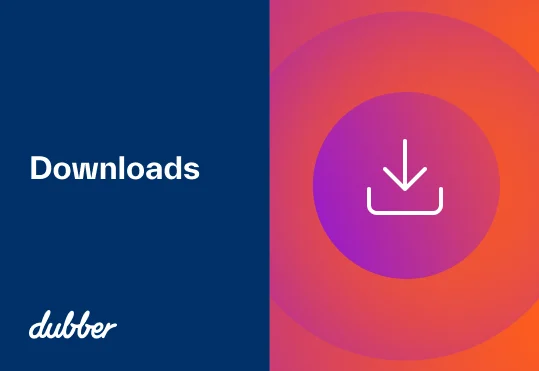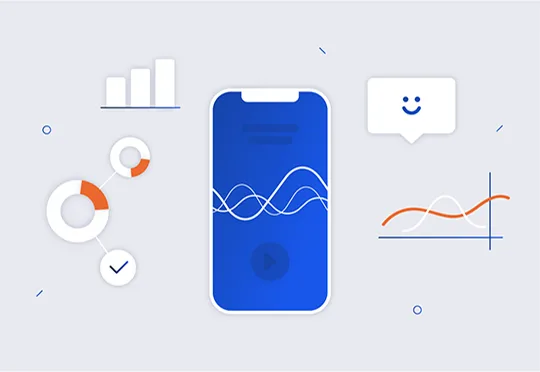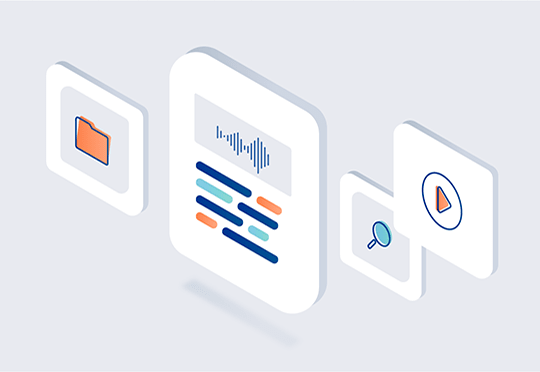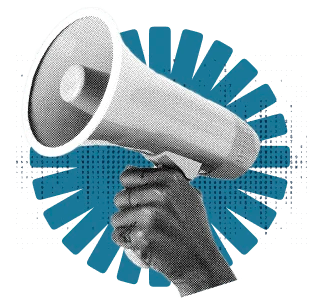
Dubber Provides Cloud Call Recording for Optus Loop

Playback is a call capture service for individuals that allows users to save calls that have already taken place. Users have three days after a call to save it for unlimited replay for one year. Features such as tagging and searching calls are available via mobile and web apps.
How does Playback work?
Playback is an innovative call capture service designed specifically for individuals. This unique product allows users to save calls that have already taken place. After each call is received or made, the user has three days to save it for unlimited replay for one year. Playback has all of the features of Dubber: allowing users to tag their saved calls, search and filter their results, and securely share their calls. Playback is available via the Dubber mobile app, which sends push notifications to remind users to save calls. Playback can also be accessed via web and deskphone apps. Users are charged per saved call. Playback works across fixed line and mobile calls, allowing users to access all of their communications.
A unique product for individuals
Playback calls remain private to the user who made or received them, unless they are shared by the user. Playback has one private login and the user has full control over which calls are saved and which aren’t. Whitelist and blacklist functions can even automate the saving or deleting of all captured calls from or to certain numbers.
Playback is the answer to forgetfulness. If you’ve ever put the phone down and immediately forgotten an important detail from the conversation, Playback is for you! Perfect for moments when a pen and paper aren’t handy, Playback can help everyone in their day-to-day lives as well as in the world of work. Playback is great for busy people on the go, people who hate taking notes and meeting minutes and those of us who are just a bit forgetful sometimes.
Just like other Dubber services, Playback can be managed via a mobile app: anytime, anywhere. Playback can also be used alongside voice AI Zoe for added benefits including transcription, keyword search, and sentiment analysis.
Designed for busy workers
Playback is designed for mobile workers who take calls on the go. Many sole traders do not have the luxury of taking calls at their desk and often conduct business while travelling between jobs. Playback gives them peace of mind that all those important details about their next job are safely stored for them to replay at their leisure. Here are some examples:
Sole traders: plumbers
Plumbers spend the majority of their time working remotely, or travelling from one client to another. Any calls they receive about new work are likely to be taken while they are working or driving, neither of which is convenient for noting down details such as the address. With Playback, a plumber is able to take a hands-free call while driving, safe in the knowledge that they can confirm an address later. At a time when they have returned to their desk and can note down important details, they can browse their call history and choose the calls they want to replay in order to confirm the details of the job.
Journalists
Busy journalists spend much of their time calling sources and conducting interviews over the phone. Rather than trying to make notes during a call, where they might get distracted from the conversation, or miss important details, journalists can replay a conversation to write up an interview. In an industry where accuracy is crucial, knowing a phone call can be replayed at any time gives peace of mind to journalists who can be reassured that any quotes can be easily confirmed.
C-level executives
Playback can make the life of everyone who conducts their business while on the go a whole lot easier. C-level executives who jump from one phone call to another, often taken while travelling between meetings, can benefit from the gift of hindsight that Playback brings. The ability to replay calls — anytime, anywhere — can save time writing follow-up emails to confirm details. Important business can be undertaken over the phone, with the knowledge that the voice equivalent of a paper trail is securely stored in the cloud.

Voice calls are the main point of contact for Australian Military Bank members. The Bank uses Dubber call recording as an essential part of improving the member experience and compliance.
Here’s the backstory
Australian Military Bank is a member-owned mutual bank. Open to everyone, however, it provides specialist banking and finance services to Defence personnel and their families.
There are 14 branch locations across Australia and 11 internal Departments connected to Dubber CallN.
Head of Marketing Penelope Killick says the bank’s membership differs from other financial institutions. Many members serve in the Defence Force, they get deployed across Australia and may find themselves posted overseas.
She says: “We’ve got members who are always on the move. That’s why contacting via phone is so important. Our members may be deployed in places where they don’t have access to a branch. For these reasons, voice calls are the main point of contact for many members. It’s vital that we get it right.”
While the Bank has a central call centre in Sydney, many calls are either directed to branches or routed to them. The system can transfer after-hours calls in Eastern Australia to a branch in Perth. The contact centre team are able to handle many enquiries that might otherwise be a branch’s job.
Customer Experience is everything
Rizwan Dean, the Bank’s IT manager, says the Bank uses Dubber CallN for quality assurance, call recording and analytics. It allows staff to go back into calls, review a conversation, understand what members are talking about and identify their pain points.
He says: “We get a lot of information by listening to calls. Our conversations with our members tells us a lot about what they really want from us as their bank. We find Dubber is a very useful application.”
Killick says improving the member experience is a key priority for the Bank. “We can provide them with services to meet their requirements. We can help members particularly at the moment when Covid can mean circumstances may change”.
“Being able to log-in, and look at what is happening with member enquiries is important. We like having the ability to coach our staff in how to better respond to what are often unique requirements. And we find the tool useful when it comes to handling complaints, which is part of improving the member experience.”
Proactive Fraud Detection and Compliance
Dean says the Bank also uses voice recordings to detect and deal with fraud. Calls are easily checked if the fraud team suspects there is an issue or if a customer asks a staff member to do something fraudulent.
Another important related use is bank compliance. Australian regulators require the Bank to keep customer recordings for seven years. The recordings provide immutable evidence of every customer conversation.
As part of that process, auditors have the opportunity to review sample recordings and their own quality assurance checks. They provide reports to the Board and to regulators, to demonstrate they are meeting compliance requirements.
Cost Savings, Reliability and Productivity in the Cloud
Australia Military Bank’s dispersed network uses unified communications and that’s a natural partner for Dubber’s unified voice recording.
Dean says it means the Bank can use a single solution for all its recordings.
He says; “When I joined the Australian Military Bank one of the biggest pain points was that the Bank had to put physical computers and hardware at each site. These connect to our network and sit listening to voice traffic.
“The recordings were then uploaded back into the CallN portal. That was a problem because our branches are located at Defence sites. When there was maintenance, security work or patches on the Defence network, our branches would lose their connectivity. That meant we would have gaps in our quality assurance and compliance.
“Going to Dubber CallN cloud made our lives so much easier. That’s because it no longer matters where someone is dialling in from, even from mobiles, the recording happens at the Telstra gateway, not the branch.
“It means the gap is now closed. We don’t miss anything. It also means the overall
hardware footprint and the capex is significantly reduced.”
The cost and productivity savings to the Bank are considerable. Previously every time a computer broke down, they’d have to replace it and send it out to the site and all machines required constant patching and upgrades to stay compliant.
As a result of the move to the cloud solution, they’ve eliminated the huge number of hours spent every month building and patching computers and guiding staff how to set them up on site.

Dubber Half-Year Commentary

Investor Presentation Feb 2019

We are so pleased to announce that Cox Business has launched on Dubber. Cox Communications is the largest privately held telecommunications company in North America and Dubber’s call recording and voice AI services are now available across the Cox Business network for all UC, SIP Trunking, and VoIP customers.
Dubber and Cox have integrated their platforms to provide an automated sign up service for Cox Business customers that will instantly provision Dubber call recording on the Cox network. The service is available now for Cox Business customers, after a successful beta testing deployment stage.
Steve McGovern, CEO Dubber:
“Cox is regarded as a leading provider of business communications globally, and is one of the most trusted brands in the telecommunications industry. The Cox integration into dubberconnect.com, with Call Recording, Playback and Contact Centre services, in addition to the Zoe AI suite, provides a seamless experience for customers and a world class service offering which we believe will have widespread applicability across the Cox Business network. We are particularly pleased with the very strong uptake of our premium Call Recording plans, “Contact Centre Agent” and “Plus.”

Dubber Delivers Quarter of Record Growth

When you think about call recording, you’re probably thinking of server rooms full of equipment, call centers, RVAs announcing that this call may be monitored for training and coaching purposes…but all that is changing. Call recording no longer requires huge CapEx investment, nor the floor space to house servers. It can enable a business to do far more than just listen to a few random calls a month to rate a consultant’s performance.
Call recording with artificial intelligence opens up a world of new possibilities like reducing churn and increasing net promoter score. If you’re a marketing manager or customer experience manager, this blog is for you!
If churn or retention is part of your targets, you probably think you have enough data on your customers and know exactly why they’re leaving. You probably have access to some reports that tell you why a customer is calling, based on their IVR selection, right? But what about all the other information transacted when a customer is talking to one of your call center agents?
Chances are, unless a customer escalates an issue, or you listen to a few calls a month, you have no idea what happens on a call. Dubber’s Zoe can change all that.
Imagine receiving a report that gives you customer sentiment on every call that takes place. Or being able to identify phrases or keywords spoken during a call that may highlight customer pain points you had no idea existed. Zoe can do this and so much more!
Campaign Reporting
As a marketer, either you or one of your team will be likely be providing regular campaign reporting. And if this is the case, you’re probably relying on the call center to have accurately recorded how the customer heard about you, or if they are calling in relation to a particular campaign. Zoe’s advanced search functionality means you can pull every call where a campaign name or offer was discussed. No more wondering if your response rate is correct, you’ll know exactly how successful your campaign was without worrying if the call centre entered the right campaign details into your CRM or not.
End the guessing game
How many times have you had to estimate the impact of a price rise? With Zoe, you’ll know exactly how many people called and if they churned or changed product, so next time round it won’t be such a guessing game. Simply enter the date range and key words such as ‘price’ and search for negative sentiment to find every call. From here you can either listen to each call or review the transcript and sentiment.
Get the edge on your competitors
Understanding sentiment can give you the edge on the competition. Let’s say a customer has had a negative experience with a call center agent, we’ve all heard these one hundred times over at a BBQ. Chances are, no one knows this call took place aside from the agent and the 10 people the disgruntled customer told. Zoe can alert relevant persons in your organization to the call, allowing them to contact the customer and potentially turn a negative experience into a good one: stopping that customer from churning or leaving a negative review and telling anyone who’ll listen how bad their experience was.

Have you ever put the phone down and forgotten what the last point was? What was the last item you are meant to pick up on the way home? When is that report due? Playback by Dubber is the answer.
These days, many of us are working on the go. If you’re driving or running from one place to the next, grabbing a pen and paper isn’t really an option, so you’re left with having to call the person back, or try and remember the details of the call.
Have the conversation over and over – in a good way!
Playback allows you to save your calls, with the option to keep the call for up to 3 days after it took place. Once you’ve chosen to keep the call, you can listen to it as many times as you like via the Dubber app on your phone. Once you’ve decided to keep the call, a secure audio file is generated, which only you can access.
Claim it as your own
Playback is available to service providers to white label as their own for their customers. The Dubber App can also be customized with your own branding.
Connect via Dubber Connect
If you’re with Cox Business or AT&T, ask your account admin to enable Playback for you and start Playing-back straight away. Your boss and spouse will think your memory has improved immeasurably!
Playback is great for busy people on the go, people who hate taking notes and meeting minutes and those of us who are just a bit forgetful sometimes.
Contact us for more information on Playback today!

Constitution of Dubber Corporation Limited

